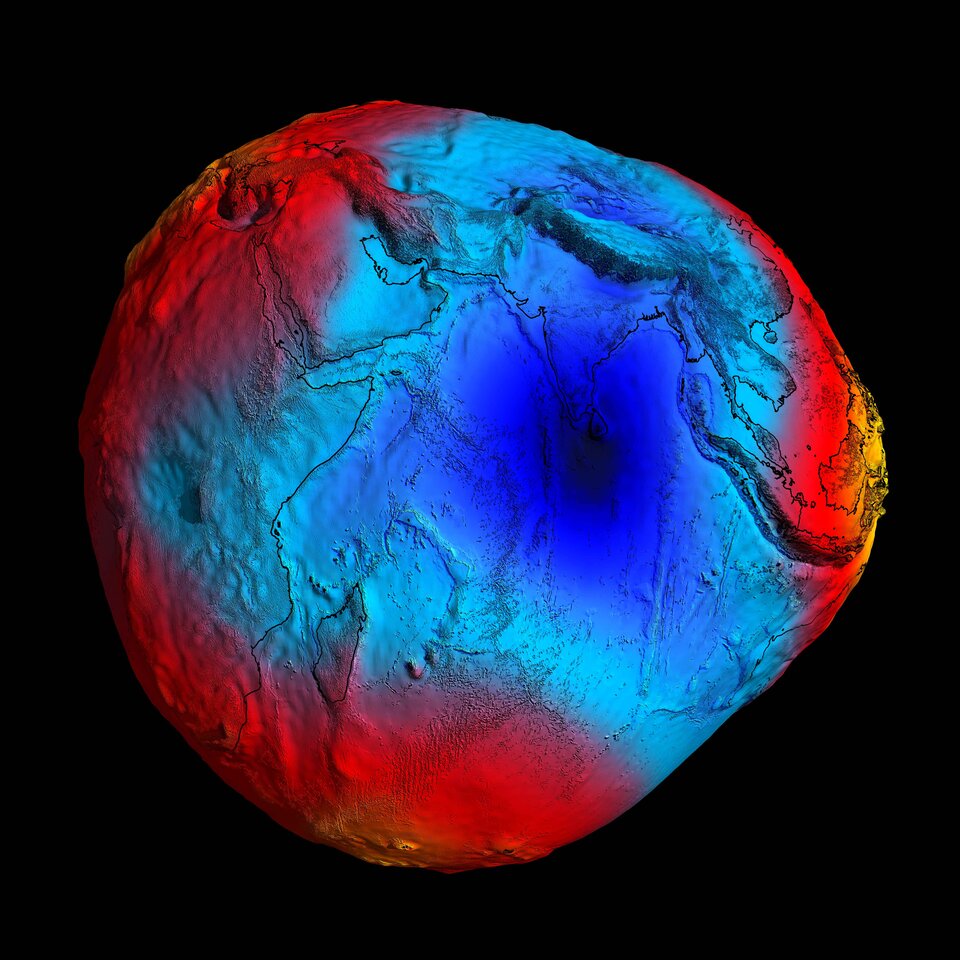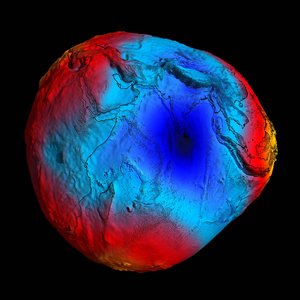Understanding the ‘OC’ in GOCE
A year after the satellite reentered the atmosphere, scientists using data from the GOCE satellite have made a breakthrough in our understanding of ocean currents.
The Gravity field and steady-state Ocean Circulation Explorer, or GOCE, mapped variations in Earth’s gravity with unrivalled precision, resulting in the most accurate shape of the ‘geoid’ – a hypothetical global ocean at rest – ever produced.
While the mission is well known for its gravity measurements, the second mission objective as an ‘ocean circulation explorer’ has reached a milestone.
Using GOCE data, scientists have produced the most accurate model of ocean current speeds to date.

To do this, the GOCE geoid was subtracted from the mean sea-surface height measured over a 20-year period by satellites including ESA’s veteran Envisat. The result shows the mean dynamic topography of the ocean surface, showing higher- and lower-than-average water levels. Based on this map, ocean currents and their speeds were calculated and validated using in situ buoys.
The result shows that this GOCE-based model is more accurate than any other model based on space data to date.
“The accurate estimate of ocean surface currents, as provided today by the combination of GOCE and altimetry data, is crucial for the better understanding of the ocean dynamics,” said Marie-Hélène Rio from the Institute of Atmospheric Sciences and Climate of the Italian National Research Council.
“In particular, the assimilation of this information into operational ocean monitoring and forecasting systems will provide highly valuable new insight into the present and future state of the ocean.”
This was just one of many GOCE results presented today at the opening of the 5th International GOCE User Workshop at the UNESCO Headquarters in Paris, France.
The new ocean current speed map is of particular interest to UNESCO’s Intergovernmental Oceanographic Commission, which supports the international cooperation and the understanding and management of oceans and coastal areas.

During the workshop this week, presentations on the scientific results that continue to come from ESA’s gravity mission will be given, with focus on the improved measurements obtained during the satellite’s ‘second mission’ – when its super-low orbit was lowered even further during its final year of life.
On 21 October 2013, the mission came to a natural end when it ran out of fuel. Three weeks later, on 11 November, the satellite disintegrated in the lower atmosphere.
Although its flight is over, the wealth of data from GOCE continues to be exploited to improve our understanding of ocean circulation, sea level, ice dynamics and Earth’s interior.








